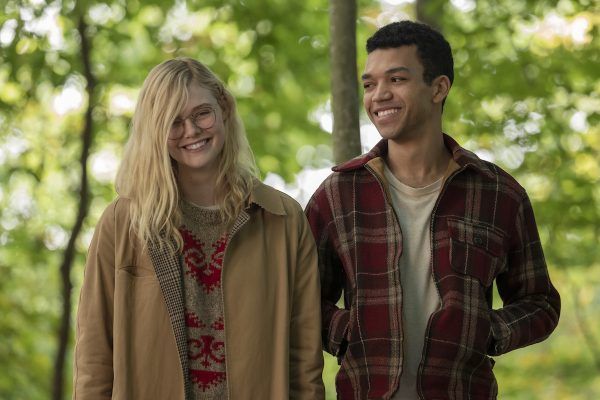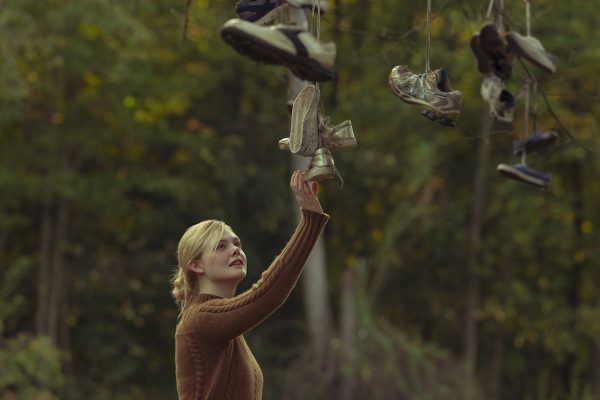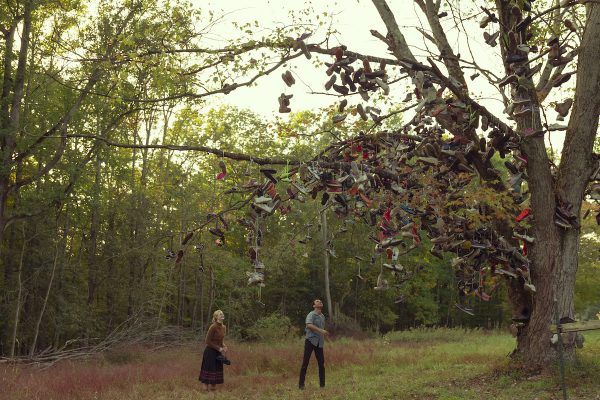*Be aware that MAJOR spoilers for the All the Bright Places ending are discussed*
Directed by Brett Haley (Heart Beats Loud) and based on the best-selling novel by Jennifer Niven, All the Bright Places tells the story of Violet Markey (Elle Fanning) and Theodore Finch (Justice Smith), whose bond will change each other’s lives, forever. Unfortunately that bond doesn’t guarantee a happily ever after, especially if you’re a young person experiencing mental illness.
Mental illness is never an easy journey. It impacts family and relationships and can be very personally overwhelming, so it’s important to ask for and get help because there is help out there. That’s the message that the film’s co-stars would like viewers to take with them, as a result of the story’s heartbreaking ending. When Collider spoke to Elle Fanning and Justice Smith about All the Bright Places, we asked them about how the ending impacted them, what it was like to shoot the final moments, and how this is a cautionary tale, and here’s what they had to say.
Collider: What was your reaction, the first time you read what the ending would be?
ELLE FANNING: With the book, when I read the ending, I sobbed my eyes out. I sobbed and sobbed.
JUSTICE SMITH: What I loved about the ending is how ambiguous it is about the intention of Finch’s passing.
FANNING: It was really important that we didn’t show his passing.
SMITH: Exactly. One thing that was important to me, when I signed up for the film, was that Finch wasn’t martyred. I didn’t want young kids to see themselves in Finch and think that, if they were to pass, people would finally see how special they were. That was not the lesson I was trying to show with the character. Finch’s passing was a result of him not reaching out and getting the help that he needed to manage his mania and his depression. The effect that it has on the other characters is that they see how important it is that they didn’t reach out.
FANNING: If you see someone that’s struggling and you know that they’re in pain, you need to say something.
SMITH: Yeah, exactly. So, I really liked how it was handled in the film, and it was handled in the book.
Elle, how hard was it to shoot those last moments?
FANNING: We had a week that we were on the Blue Hole location, and the last day that we were there, we shot the discovery and Violet finding out that Finch had passed. I felt like a boxer before a fight, ready to go, and then there was this outpour of emotions. We were all sad that day, the whole crew. Justice wasn’t there, and it was very sad to think about. That hit us really hard, but I also knew that it had to be real. You had to feel, in that moment, the real grief, in order to get the pay off, at the end.
It’s definitely going to be hard for young viewers to watch this story and not fall in love with your characters. So, what would you say to young viewers who watch this and are just heartbroken by the end of it?
FANNING: You want to feel. I’m still young, and I still feel this way, but when I watch this, I wanna cry. I wanna feel everything. I think there’s something that, when you’re young, you wanna feel it all. I don’t know.
SMITH: It’s a cautionary tale. If they’re upset about his passing, it’ll hopefully show how important it is to reach out or to let somebody know what you’re going through because Finch’s death has such an effect on the people around him, and you would never want the people who love you to experience that. It provides insight into what it’s like to be gone and to be missed.
FANNING: And it’s also life. Dealing with grief and pain is something that isn’t really talked about enough. Violet’s trajectory of her grieving process is something that we really wanted to stay truthful. It’s her process, and everyone’s process is different, but it’s life. Also, it’s Jennifer Niven’s story. This isn’t fiction. This really happened to her, when she was young. She had a boyfriend who this happened to. So, we wanted to make sure that it was handled with care. We also thought about fans of the book. We got to meet a lot of those kids and read letters from kids who this story has helped, and I hope that the movie does the same. There’s a real community now. I think it’s beautiful to create a community and a conversation.
All the Bright Places is available to stream at Netflix.




